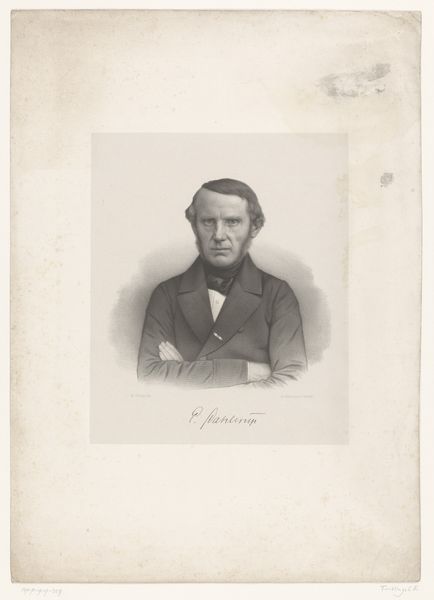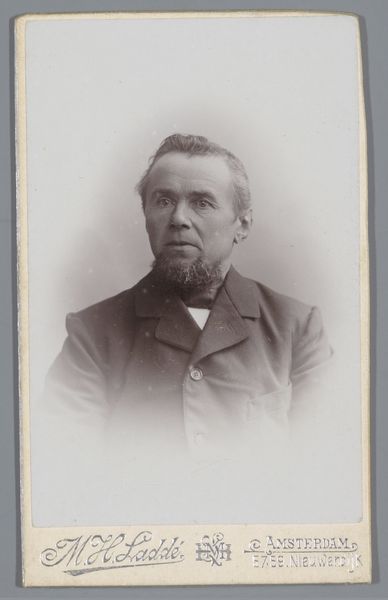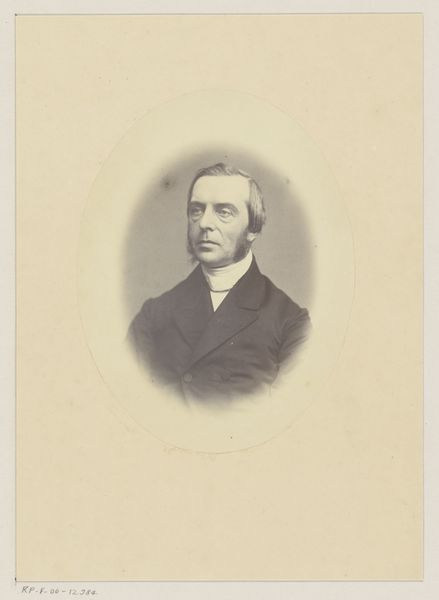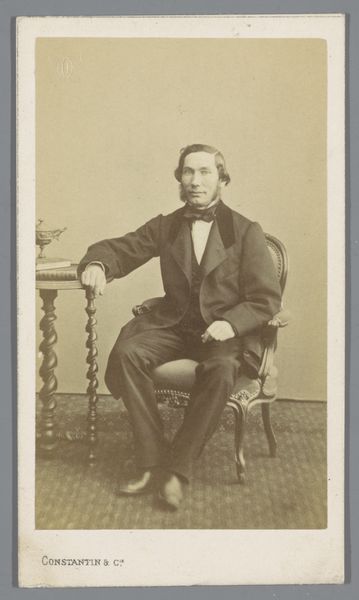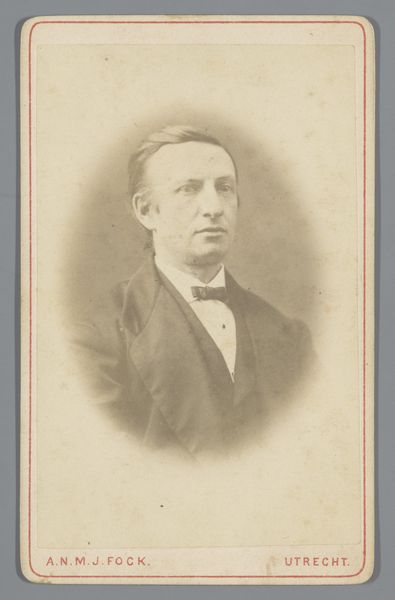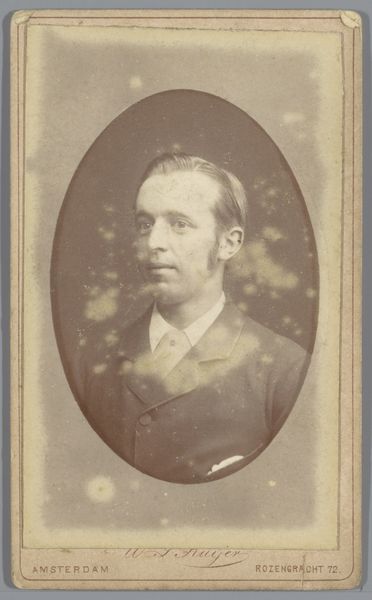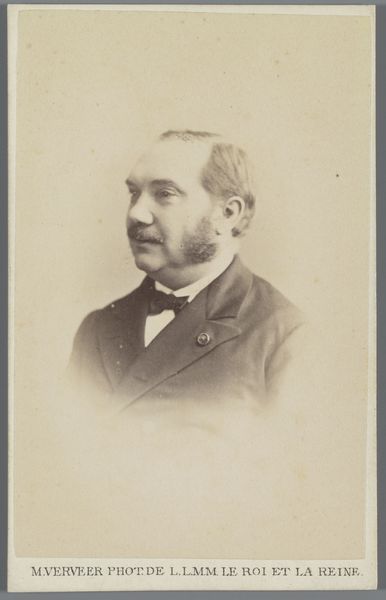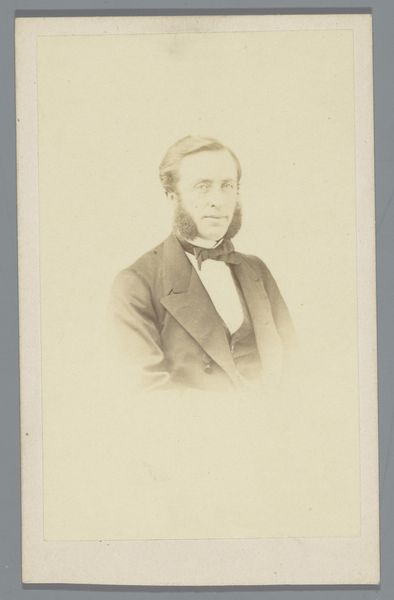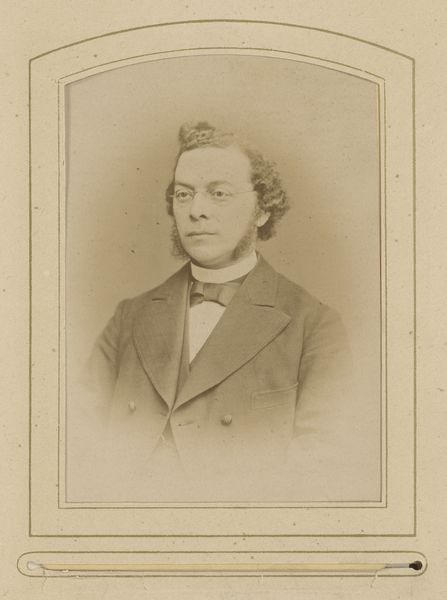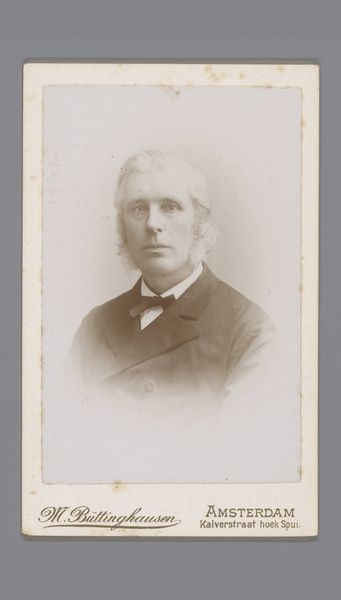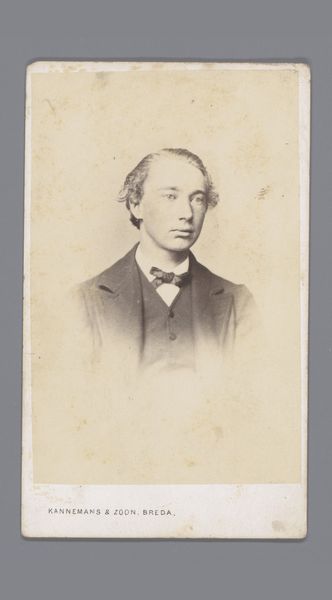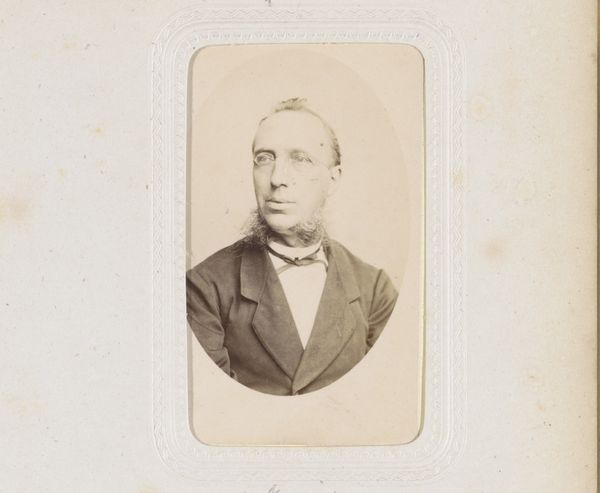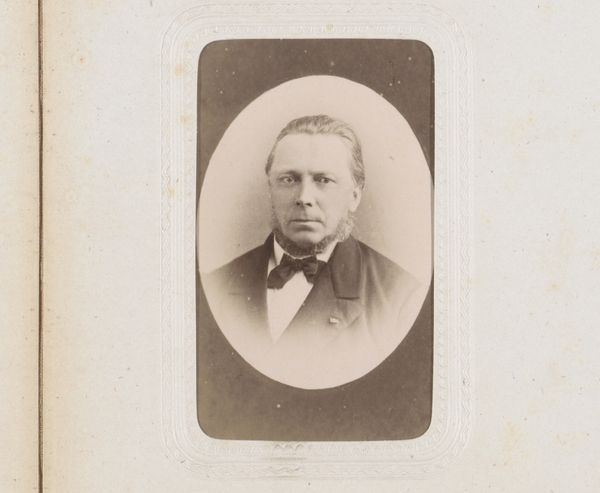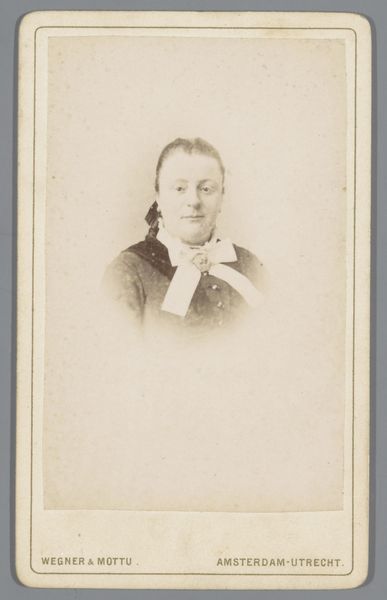
print, paper, photography, albumen-print
#
portrait
# print
#
paper
#
photography
#
historical fashion
#
paper medium
#
albumen-print
Dimensions: height 167 mm, width 109 mm
Copyright: Rijks Museum: Open Domain
Editor: Here we have an albumen print from between 1892 and 1906, "Portret van een onbekende man" or "Portrait of an Unknown Man" by Johannes Baer. It has such a formal, stoic feel. How do you interpret this work, considering its historical context? Curator: This portrait offers a glimpse into the constructed identities of the late 19th century. The sitter’s rigid pose and carefully cultivated appearance – note the grooming and formal attire – speak volumes about the performance of masculinity and class. What social messages do you think he’s trying to convey? Editor: Perhaps a sense of respectability and authority? He looks like someone of means. It seems very deliberate. Curator: Precisely. Photography at this time was becoming increasingly accessible, but studio portraits remained a significant act of self-representation, especially for the middle classes. The “unknown man” deliberately chooses to align himself with the era's norms. It prompts us to ask: What are the power dynamics inherent in portraiture, and how do these images reinforce societal structures? Editor: So, it's less about capturing the "true" self and more about constructing a public identity? Curator: Exactly! It’s about navigating the complex social landscape, isn’t it? What this image conceals is just as important as what it reveals, pointing towards those often silenced or excluded from such representation. Editor: I never considered the act of sitting for a portrait as such a politically charged act, one reinforcing social and cultural norms, particularly regarding class. Curator: Indeed. Seeing beyond the surface, acknowledging absences, helps us uncover the layers of meaning embedded within seemingly straightforward representations of the past. This really illuminates not only how identities were performed but also who had the privilege of performing them. Editor: I appreciate that expanded understanding, really gives it more depth. Curator: It is critical to examine who is historically given a voice and how. The power is not just in representation but also in the control of the narrative.
Comments
No comments
Be the first to comment and join the conversation on the ultimate creative platform.
